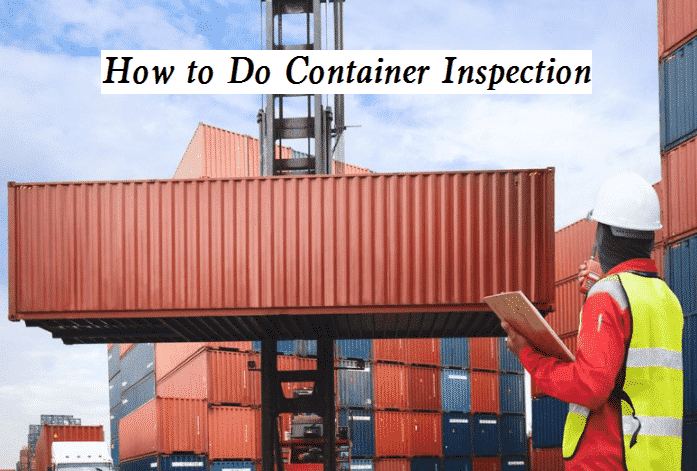In order to make the container is ideal for loading, there are various inspections and checks that need to be conducted. In this article, we’ll outline the content covered in container loading supervision and its benefits, as well as the steps of general container inspection.

What is Container Loading Supervision?
Container loading supervision (referred to as CLS): it refers to the final step of goods monitoring in the manufacturing process. When packing goods at the manufacturer’s warehouse or the place of the freight company, the factory or the third-party inspector sends someone to check the packing. During the loading supervision, the inspector will supervise the implementation of the whole loading process. Container supervision service helps you ensure that the products and quantity delivered are correct before payment. IPQC has strong technical support and a professional management team to escort your inspection process.
Container loading supervision covers the following aspects:
- Product quantity and external packaging
- Random sampling quality inspection of products
- Record the number of the product (and seal the package in the middle)
- Supervise the cabinet loading process to reduce damage and maximize the use of space
- Record the loading conditions, including weather, container arrival time, container number, truck number, etc;
Benefits of Container Loading Supervision:
- Ensure the quantity of goods;
- Ensure that the container environment is suitable for transportation, including humidity and odor;
- Check the packaging status and packing status of goods to reduce the damage of goods caused by improper packaging or placement during transportation;
- Randomly check the quality of goods in the packing box;
- Maximize the use of space and save costs;
- Prevent the factory or freight forwarder from transferring packages halfway.
How to Do Container Inspection – Steps of Container Inspection
Containers must undergo strict inspection before loading goods. Defective containers may cause damage to the goods at least and may cause damage to the containers and death of people during transportation and loading and unloading. Therefore, the inspection of containers is one of the basic conditions for the safe transportation of goods. When the consignor, the carrier, the consignee, and other related persons hand over the boxes to each other, they shall not only check the boxes but also confirm the status of the boxes in written form such as equipment handover form.
1) External inspection: refers to the inspection on six sides of the box to check that there are abnormal conditions such as damage, deformation, and breach on the outside. If there is any, mark the repair part. Check whether the marks and numbers of containers are clear and consistent with those recorded on the certificate of conformity. Check whether the outside of the container, especially the four columns, six sides, and eight corners, is intact and free of damage and leakage. When a concave or scratched part outside the box is found, it should be especially carefully checked for cracks or cracks. Pay special attention to the repaired parts. In addition, the rivets of metal containers are often loose and broken, which will also cause hidden dangers of leakage, so they must be strictly inspected.
2) Internal inspection: it refers to the inspection of the inner side of the box on six sides to check whether there is water leakage, light leakage, stains, watermarks, etc.
3) Door inspection: check whether the door is intact, whether the surrounding of the door is watertight, whether the door lock is complete, and whether the door is opened at 270 °.
4) Cleaning inspection: it refers to whether there is residue, pollution, rust, peculiar smell, water humidity, etc. in the box. If it is found that the loading requirements are not met, it shall be submitted to the relevant departments for cleaning to eliminate moisture and odor, or take appropriate bedding materials and other remedial measures. If it is impossible to clean and take measures, the container must be replaced.
5) Inspection of accessories: it refers to the inspection of the state of the reinforcement link of the goods, such as the state of the column of the plate frame container, the state of the reinforcing structure for the extension of the upper part of the flat container and open-top container, etc.